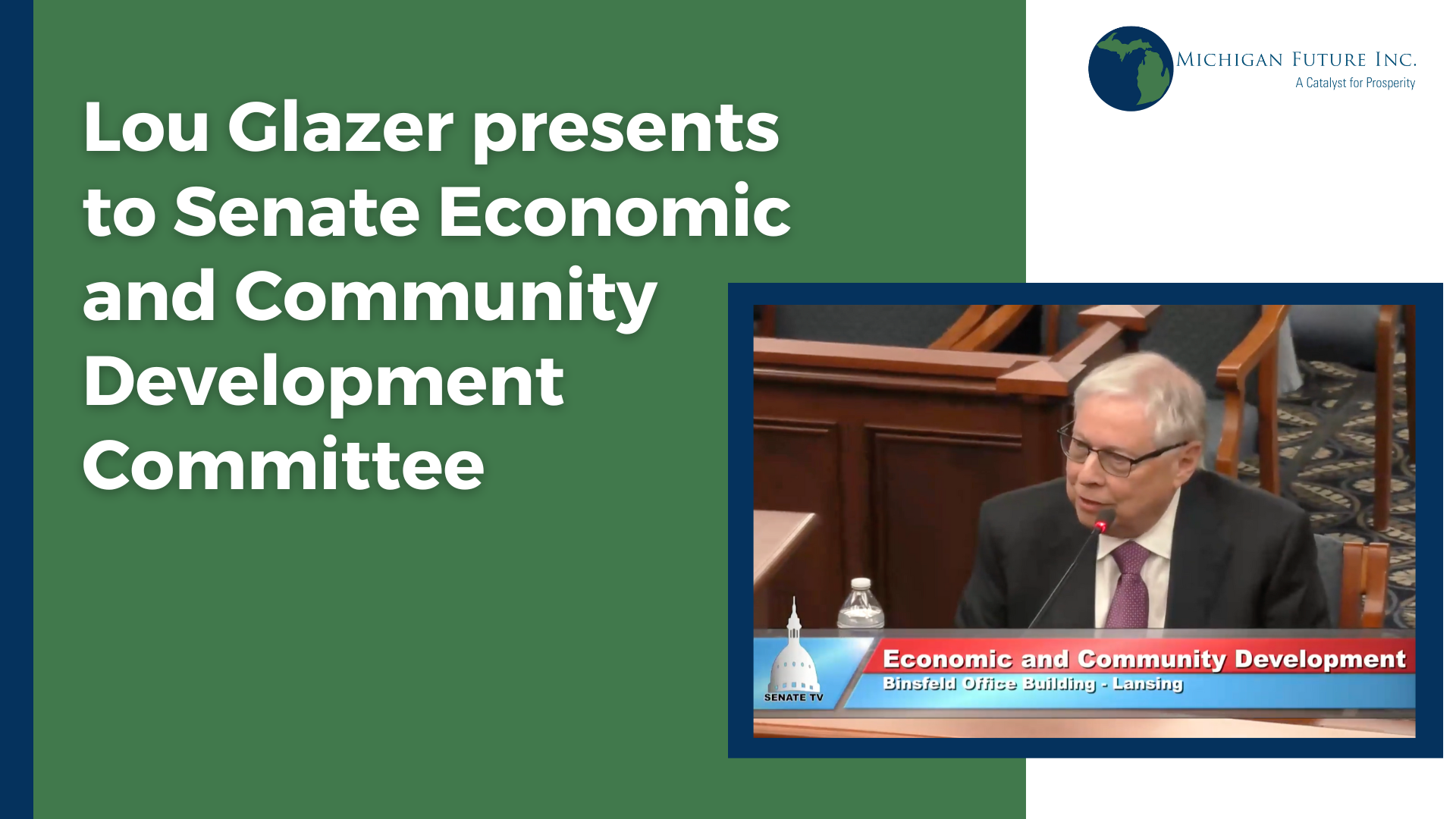Former Governor Granholm commented on my blog on a decade of state spending restraint. (You can find the blog and comment here.) The Governor wrote:
… Of course much of that was due to the changes in the economy, but I also cut taxes 99 times (small and large) in the first 4.5 years of my terms in the hope that Friedman/Adam Smith/Reagan were right. They were not. We still had the highest unemployment rate in the country. Enough of that experiment. Let’s move to what we know works. … This is what people must learn from Michigan’s laboratory of democracy: laissez-faire trickle-down theory might have been a fine strategy last century. But in a global economy our economic competitors are playing a much more aggressive, hands-on game. We’ve got to do the same: invest and grow rather than cut and lose.
The lesson she learned, most elected officials here and nationally have not. Seems like it would be a relatively easy lesson to learn. The evidence is clear. Bill Clinton started his Presidency with a big tax increase. The tax cutters guaranteed economic disaster. We got the strongest American economy, at least since the Great Depression, maybe ever. George Bush started his Presidency with what was billed as the biggest tax cut in American history, followed by more tax cuts, and we got the weakest economy since the Great Depression. How can anyone – except those living on planet ideology – still believe that lowering taxes is the key to economic growth?
Warren Buffet in a terrific New York Times op ed, entitled Stop Coddling the Super-Rich, arguing for higher taxes on the rich, explains the irrelevance of lower taxes to economic growth this way:
Back in the 1980s and 1990s, tax rates for the rich were far higher, and my percentage rate was in the middle of the pack. According to a theory I sometimes hear, I should have thrown a fit and refused to invest because of the elevated tax rates on capital gains and dividends. I didn’t refuse, nor did others. I have worked with investors for 60 years and I have yet to see anyone — not even when capital gains rates were 39.9 percent in 1976-77 — shy away from a sensible investment because of the tax rate on the potential gain. People invest to make money, and potential taxes have never scared them off. And to those who argue that higher rates hurt job creation, I would note that a net of nearly 40 million jobs were added between 1980 and 2000. You know what’s happened since then: lower tax rates and far lower job creation.
Bruce Bartlett – one of the original supply side tax cutters – provides further evidence in a New York Times Economix blog. He writes:
It would have been one thing if the Bush tax cuts had at least bought the country a higher rate of economic growth, even temporarily. They did not. Real G.D.P. growth peaked at just 3.6 percent in 2004 before fading rapidly. Even before the crisis hit, real G.D.P. was growing less than 2 percent a year. By contrast, after the 1982 and 1993 tax increases, growth was much more robust. Real G.D.P. rose 7.2 percent in 1984 and continued to rise at more than 3 percent a year for the balance of the 1980s. Real G.D.P. growth was 4.1 percent in 1994 despite widespread predictions by opponents of the 1993 tax increase that it would bring on another recession. Real growth averaged 4 percent for the balance of the 1990s. By contrast, real G.D.P. growth in the nonrecession years of the 2000s averaged just 2.7 percent a year — barely above the postwar average.
Buffett is right: lower tax rates and far lower job creation! So is Granholm. It’s time for a change away from a failed strategy. Let’s – as she wrote – invest and grow rather than cut and lose






